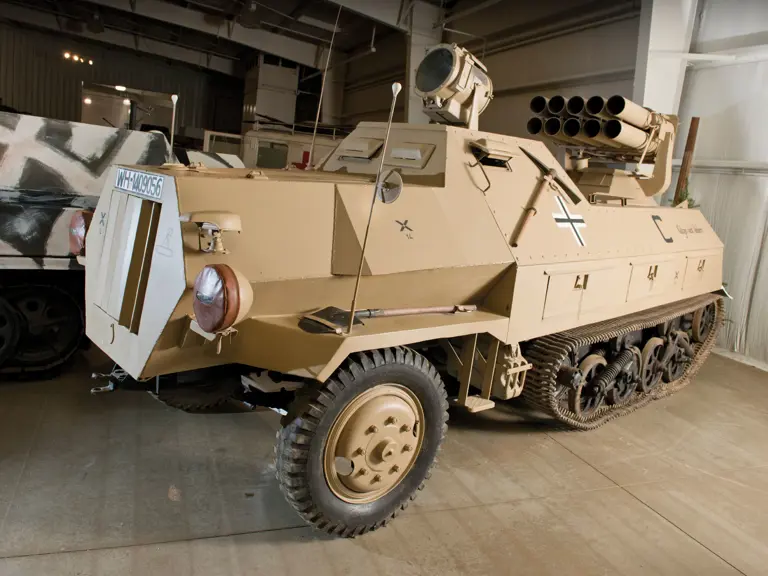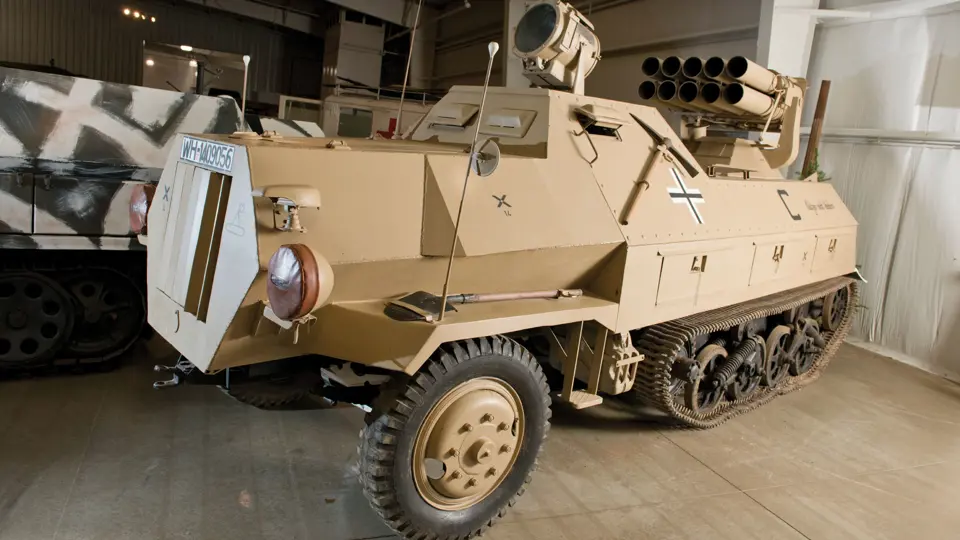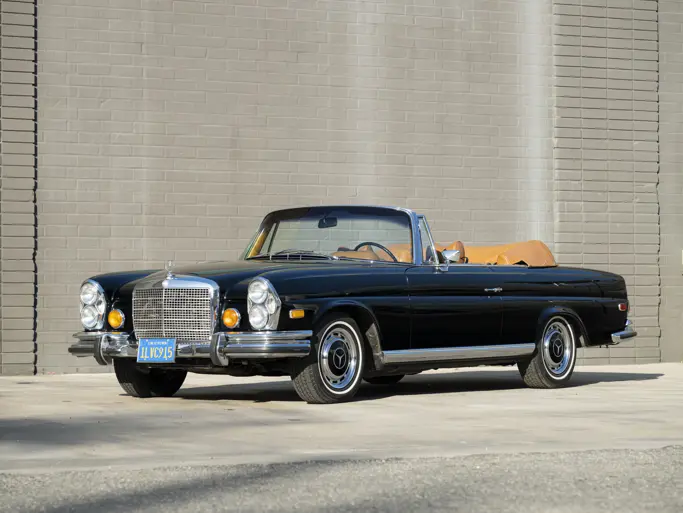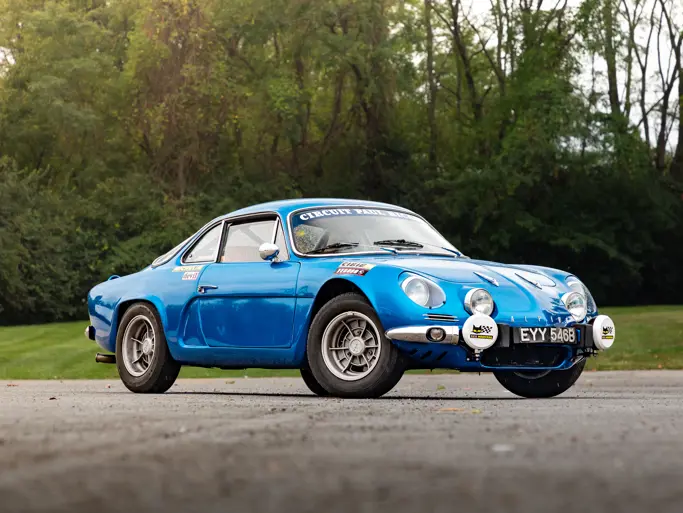Please Note: Information regarding these museum display vehicles was provided by the National Military History Center and has not been independently verified by Auctions America by RM ("AA"). As such, AA does not verify, warrant or guarantee any of this information. Prior inspection and research by the buyer is highly encouraged and recommended.
ATTENTION: Buyers are responsible for securing transportation and moving/loading of lots. Lot may be left on display indefinitely in the museum free of charge with a signed loan agreement form. Lots are sold as is, where is.
Please note this is being sold on "Bill of Sale" only.
Manufacturer: Opel Division of General Motors, Germany
Production Years: 1943-1944
Engine: No Engine – specifications call for: Opel OHV, 3.6-liter, 75-hp, eight-cylinder, liquid-cooled, gasoline
Length: 19-feet, 5-inches
Width: 7 feet, 2 inches
Height: 8-feet, 6-inches (to top of rocket launchers)
Weight: Approximately 7-tons (loaded)
Armor: Superstructure front, sides and rear: 8-mm - hull front, sides and rear: 8-mm - top and bottom: 6-mm
Armament: One 10-barreled rocket launcher mounted on an armored swivel mount
Maximum speed: Approximately 20-mph
Crew: Four
Markings: German 5th Panzer Division, Nebelwerfer Brigade
Demilitarized
In 1942, Opel began production of 2-ton Maultier (Mule) half-tracks at their Brandenburg / Havel plant. The Maultier reportedly originated from a field modification carried-out by the 2nd SS Panzer Division “Das Reich” during the winter of 1941-1942. Conditions on the Eastern Front, where already poor roads turned to seas of mud during rainy seasons and slush in the spring thaw, created almost impossible transportation situations for the wheeled truck units of the German army. A standard Ford 3-ton V3000S 4x2 truck was used as the basis of the conversion along with sets of Carden-Loyd tracks and bogey wheel assemblies from captured British Universal type carriers. In 1943, Opel was ordered to start production on an armored, self-propelled version of the Nebelwerfer rocket launcher based on the Maultier half-track. Combat experience demonstrated the vulnerability of the towed Nebelwerfers. Conspicuous smoke trails, which resulted from firing salvos of Nebelwerfer rockets, left the exposed crews vulnerable to counter-battery fire. The armored Maultiers corrected this by providing mobility and protection. 300 Opel Panzer-Werfer 42s were produced during World War II.



 | Auburn, Indiana
| Auburn, Indiana


